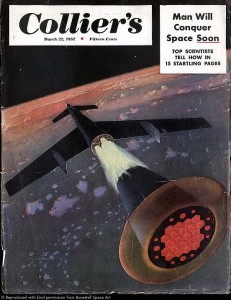PETA’s plan to derail the primate research in the face of scant public awareness has received a boost from a non-profit group called the Physicians Committee for Responsible Medicine, or PCRM.
The group filed a federal petition for administrative action last November seeking to compel the government to halt the squirrel monkey experiments because they violate NASA’s “Principles for the Ethical Care and Use of Animals,” also known as the Sundowner Report. The petition notes that the space agency has not used monkeys for radiobiology research in decades. The PCRM’s website has a page where the public can petition Bolden to halt the project.
“Irradiating monkeys would be one giant leap backward for NASA,” wrote Dr. Hope Ferdowsian, PCRM’s director of research policy, in the petition. “The proposed experiments are cruel, unnecessary, and lack scientific merit. There are better, more humane ways of understanding the potential dangers of interplanetary travel to humans. Scientific progress can only proceed with a strong ethical foundation.”
The group’s petition for administrative action says that the radiation experiments will violate the standards of the Sundowner Report, a landmark 1996 NASA document that requires researchers to respect living creatures, consider the full range of societal good that may come from an experiment and utilize non-animal methods whenever possible.
“Genetic, physiological, and anatomical differences between humans and monkeys dramatically limit the conclusions that can be drawn from the planned experiments,” the petition states. “Ongoing studies, including those funded by NASA and the U.S. Department of Energy, already use nonanimal methods to determine the effects of low-dose radiation on human tissues.”
PCRW takes particular aim at the experiment’s originator, Bergman, as the NASA-funded researcher who “would involve irradiating monkeys and testing them to see how they perform on various tasks,” wrote Ferdowsian. “Bergman has used squirrel monkeys for 15 years in addiction experiments, which have involved applying electric shocks, withholding food, and completely immobilizing the animals in restraint chairs for extended periods.”
Back to the Future
Bergman’s profile on the Harvard Clinical and Translational Science Center website lists 122 publications that document experiments with such titles as “The effects of electric shock on responding maintained by cocaine in rhesus monkeys” and “Drug effects on primate alarm vocalizations.”
A 1994 study, “Discriminative stimulus effects of caffeine in methamphetamine-trained squirrel monkeys,” seems bizarre on the face of it while another Bergman report, published in 1997, has a particularly ominous title: “Back to the Future. A Commentary on Animal Models of Anxiety: Where Next?”
Outer space, it would seem, but the monkeys headed for the hot seat will have to endure their terrestrial-bound experiments in a high tech bunker at NASA’s Space Radiation Laboratory at the Department of Energy’s Brookhaven National Laboratory in New York.
That is if public outrage doesn’t corral the simian-sacrificing agency which claims that the monkeys will not be killed and will remain at McLean Hospital, where they will be overseen by veterinarians and staff.
“The beauty of this is that we can assess at different time points after exposure, so not only do we get a sense of rather immediate effects, but then we can look again at longer time points,” Bergman told Klotz. “That kind of information just hasn’t been available.”
But this statement holds little merit considering that monkeys are biologically different enough from humans that the results of these experiments cannot be readily correlated between the species other than that radiation will kill both after extremely painful tumors, cancers and deaths. Effects of massive radiation exposure have been well documented in studies going back to the early 1950s.
Spaced Out
The current race back to the Moon and on to Mars began with former President Bush’s “Vision for Space Exploration” speech on January 14, 2004. Coming less than a year after the Columbia shuttle tragedy that claimed seven lives in the skies over Texas, the president announced a bold but expensive plan to return humans to space. The program came to be known as Constellation.
“We will focus our future research aboard this station on the long-term effects of space travel on human biology,” President Bush said. “The environment of space is hostile to human beings. Radiation and weightlessness pose dangers to human health. And we have much to learn about their long-term effects before human crews can venture through the vast voids of space for months at a time.
“Research on board the station and here on Earth will help us better understand and overcome the obstacles that limit exploration. Through these efforts, we will develop the skills and techniques necessary to sustain further space exploration.”
While Bush spoke, NASA’s Mars Exploration Rover Mission’s ongoing robotic space operation, involving the rovers Spirit and Opportunity, was successfully humming along. Since the rovers have continued to work beyond their primary functions, their missions have been extended five times.
The cost of robotic, unmanned missions is estimated to be between 10 to 100 times cheaper than manned ones. Bush posited, however, that keeping humans alive in outer space was cheaper than getting them there:
“Establishing an extended human presence on the moon could vastly reduce the cost of further space exploration, making possible ever more ambitious missions. Lifting heavy spacecraft and fuel out of the Earth’s gravity is expensive. Spacecraft assembled and provisioned on the moon could escape its far-lower gravity using far less energy and thus far less cost.”
“Also the moon is home to abundant resources,” the president said at NASA headquarters. “Its soil contains raw materials that might be harvested and processed into rocket fuel or breathable air.”
Does ‘harvesting’ Moon dirt with the hope to make rocket fuel or breathable air justify the breathtaking costs of such an endeavor? One of Constellation’s greatest weaknesses, according to critics, is that it has no realistic goals that would concretely benefit mankind, such as global warming work, other than just humans getting to the Moon and Mars. Even if NASA explorers can figure a way to breath Moon dirt and fuel their rockets with it, they’ll still have to deal with the radiation.
Dr. Strangelove
Bush’s new vision was actually a co-opted old vision of one of Hitler’s favorite SS officers, Wernher von Braun. Captured at the end of World War II with 120 fellow German rocket scientists, von Braun became a NASA legend.
The “Bowl” rocket test stands built at the astronomically polluted Santa Susana Field Laboratory in Ventura County California are duplicates of von Braun’s V-2 stands in Germany and can still be seen from the San Fernando Valley today.
Constellation’s concept was envisioned by von Braun with a series of articles in eight issues of Collier’s magazine starting in March 1952. They laid out von Braun’s vision of using a fully reusable multi-stage rocket, the conceptual precursor of the Space Shuttle, to construct a huge space station.
The floating lab envisioned by von Braun would make civilian and military observations of Earth, conduct experiments in zero-gravity and build spaceships for travel to the Moon and beyond. The last installment of the magazine articles had humans traveling to Mars.
The Collier’s series was handsomely illustrated and so charmed the public that von Braun became a television darling. Walt Disney asked von Braun to help him design Disneyland’s “Tomorrow Land” exhibit.
The former Wehrmacht Major is one of the inspirations for the titular character in the 1964 black comedy film Dr. Strangelove or: How I Learned to Stop Worrying and Love the Bomb. Directed by Stanley Kubrick, Dr. Strangelove is played maniacally by Peter Sellers as a mad German rocket scientist in a wheelchair, half-paralyzed with an out-of-control right arm given to Nazi salutes or strangling himself, all the while addressing the President character, also played by Sellers, as “Mein Fuhrer.”
Von Braun’s background was no laughing matter, however, and torturing animals to help fulfill his space vision is heavy with historic irony. Before von Braun became an icon in the space program, his weapons killed thousands of civilians and slaves.












Recent Comments